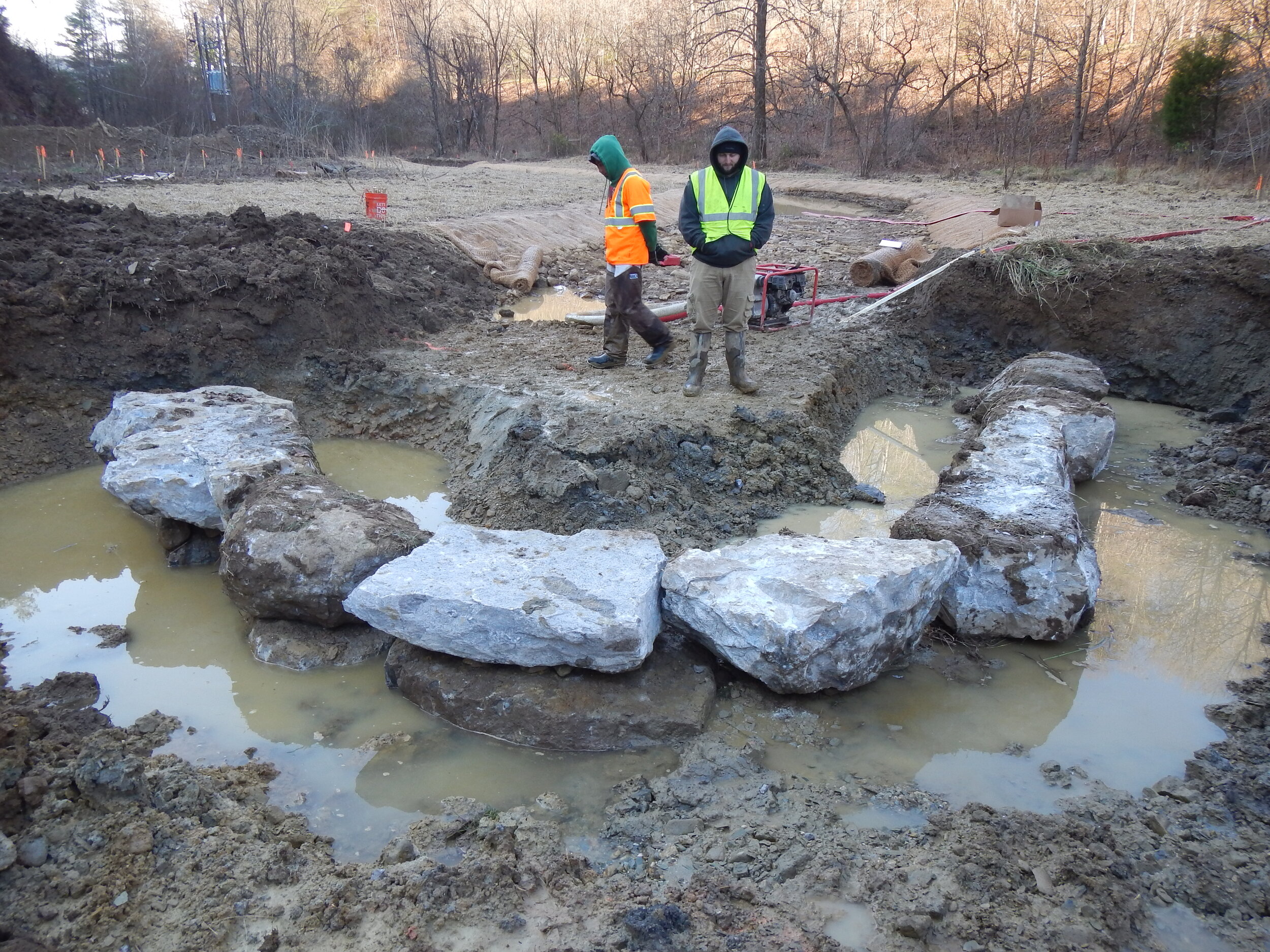introduction to stream restoration
Changes in land use have had a profound impact on Tennessee’s streams. Riparian forests were converted to agricultural lands, and streams were channelized to facilitate drainage and abate flooding. As a result, many of the natural functions of these altered streams have been destroyed.
Sediment is the single largest pollutant of Tennessee streams. Excessive sedimentation can result in the elimination of critical habitat for invertebrates and spawning fish. Sediment is introduced into streams from many different sources. Runoff from agricultural fields, commercial and residential land development, and unsound forestry practices transports tremendous quantities of sediment into our streams. Stream bank erosion is another major source of sediment. It can occur through natural channel evolution, but is more commonly a result of the loss of riparian vegetation and/or physical alteration of the stream channel.
A healthy riparian zone is a critical component of a healthy stream. A well-forested riparian zone provides shade to streams, slows water flow from runoff, and provides important wildlife corridors. Streams with little or no riparian vegetation commonly have vertical, eroding banks and degraded in-stream habitat. Hundreds of tons of valuable topsoil are lost each year to bank erosion that could easily be remedied by riparian restoration.
Stream restoration is the process of returning a significantly degraded, disturbed, or totally altered stream, including the adjacent riparian zone and flood-prone area, to a natural and stable state based on reference conditions in adjacent watersheds.
techniques employed by the tsmp
From implementation to monitoring closeout, the TSMP staff works diligently to meet the needs of the landowner(s) and to produce successful and self-sustaining restoration projects.
treatment types
Enhancement I
Enhancement II
Online Rehabilitation
Offline Rehabilitation
Often projects contain a combination of these treatment types, where stable sections are treated with Enhancement practices and more degraded sections are treated with Enhancement and Rehabilitation practices.
typical enhancement candidate
Enhancement I tree planting and live staking, livestock exclusion, and permanent protection
Enhancement II in addition to the above: limited bank stabilization, and limited grade control / in-channel structures
typical rehabilitation candidate
Online Rehabilitation in addition to enhancement treatments: rebuild / repair majority of channel bed and banks to natural, stable dimensions
Offline Rehabilitation in addition to the above: complete reconstruction of stream channel in natural low-of-the-valley
Riparian restoration involves replacing the native riparian vegetation that has been removed from a degraded stream. Riparian restoration not only increases the ecological value and overall health of a stream, but it also increases the aesthetic value of the entire stream corridor.
Bank stabilization is the process of permanently stabilizing actively eroding stream banks. This can be accomplished by re-sloping vertical banks and using bio-engineering techniques that incorporate living materials, rock, and structures that reduce the erosive near-bank velocities and provide in-stream habitat.
Rehabilitation will typically include rebuilding the appropriate channel pattern, profile, dimensions, and riparian zone to the extent that watershed conditions will allow.
Each project will include the baseline features shown above: planting and livestock exclusion. As the level of degradation of the site increases, more work is needed to restore the ecological value of the resource. Enhancement II adds limited bank stabilization and/or limited grade control or in-channel structures in some locations throughout a reach, similar to structures seen below in the rehabilitation photos. Rehabilitation work includes rebuilding the appropriate channel pattern, profile, and dimensions in addition to the riparian buffer and conservation easement that comes with enhancement work. Rehabilitation can be completed online or offline. Online means rebuilding where the channel currently exists; and offline means reconstructing the channel in the low-of-the-valley, which is commonly required in channelized systems.
After construction is completed, projects begin the monitoring phase. Once a year for 5 years, multiple parameters are measured to assess how the project is performing. Projects are designed to be self-sustaining in a state of dynamic equilibrium, so some adjustment is expected within a stable range of measured values. Once monitoring is completed and with the project meeting performance standards, it is considered successful, closed out, and enters into the Long Term Management or Stewardship Phase. From this point, the site will be visited every year to ensure the conservation easement is intact, but no further measurements or management will occur.
























